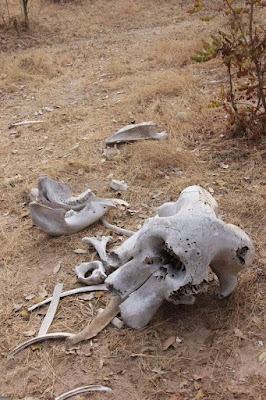The legend of the elephant cemetery
The legend of the elephant cemetery
The legend of a mythical place where elephants go to die, made famous by many films (first of all The Lion King), has its roots in tales and myths that are actually very ancient.
Already in the 1800s and 1900s, when the exploration of the African continent intensified, throngs of European adventurers and explorers went into the depths of the African savannah or jungle, in search of this mythological place where it was said that, among the skeletons of gigantic pachyderms, mountains of ivory could be found and therefore enormous wealth for those who came into possession of them.
Among other things, it was mainly Hollywood that made the myth famous: not only thanks to 'The Lion King', but also thanks to two previous films released in the 1930s: 'Tarzan, the ape man' and 'Trader Horn '. In both films the explorers went in search of this legendary place.
The myth is based on the fact that elephants are able to instinctively understand when the hour of their death is about to arrive and, for this reason, they decide to separate from the group to reach this place of eternal rest from which, according to legend, they feel attracted.
And it is for this reason that over the centuries, explorers have ventured into the deep recesses of Africa, hoping to find this cemetery that became a kind of African El Dorado.
The truth, however, is that many of these not only returned empty-handed, but sometimes never returned at all. In addition, some of them also said they tried to follow the older elephants in the hope of reaching the cemetery.
According to their stories they had tried for days or even weeks to follow the pachyderms but, according to them, cunningly made them go around in circles on purpose and without ever taking them to the desired place. This obviously increased the aura of mystery about the legend.
Other legends speak of mysterious guardians placed to protect this place.
The elephant cemetery, in fact, according to some African stories and traditions handed down by indigenous peoples, is seen as a sacred place where only a select few can enter.
And it is precisely to avoid anyone approaching and profane the sacredness of the place, considered almost mystical, that there seem to be guardians. They, in some versions of the story, are human (be they shamans, sorcerers or simple warriors), in other elephants or, still others, terrible creatures.
And it is from here that other speculations originated: according to some, in fact, the explorers who got lost and never came back were captured or killed by these mysterious guards.
Another even more extraordinary and bizarre version of the story says that, inside the cemetery, there seems to be a hidden magic book containing the solution that can put an end to all wars.
Every self-respecting legend has a minimum of background of truth. Indeed, it is undoubtedly true that, very often, over the centuries, during some excavations, groups of scholars and archaeologists have come across groups of elephant skeletons all found in the same place. Precisely this has done nothing but increase the hypothesis on the possible existence of a sacred elephant cemetery.
To give an example, one of the findings of groups of skeletons, which has intensified the myth, is that of a group of 27 elephant skeletons with straight tusks (a species of extinct pachyderm dating back to the Pleistocene) in an excavation in Saxony - Anhalt .
However, although it is actually true that there have been similar findings, it is equally true that scientists have been able to give many rational explanations about it.
First of all, older elephants usually have much more worn teeth than those of younger pachyderms. Precisely for this reason they prefer to stop where water and food are easier to find. This would explain why, very often, there have been findings of skeletons in groups in the same place.
According to other scholars, another very probable hypothesis is that it could be groups of elephants massacred by man himself to take possession of the ivory of the tusks.
Another further explanation, which would justify feeding on the myth, is due to the behavior of the elephants themselves in the face of death.
According to some studies, in fact, it has been shown that elephants "mourn" the death of their fellow humans. It seems, in fact, that after the death of an elephant, all the others continue to interact with the carcass of the deceased, even for a long time, touching it with the trunk.
Scientists have also observed that, when an elephant dies and collapses to the ground, all the others immediately rush around and try to lift and move it, even emitting small trumpets. Other times it has even been observed some pachyderms attempting to "bury" the carcasses by sprinkling them with earth.
This kind of habits may have further increased speculation and fictional tales about the legend of an elusive and sacred elephant cemetery.
What is certain is that, like all ancient legends and puzzles, it will continue to fascinate generations of people for a long time to come.











Comments
Post a Comment